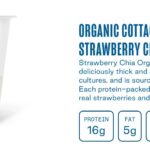How (ESOV) Extra Share of Voice through Advertising and Market Share Correlate
In the dynamic world of marketing and advertising, it’s crucial to deeply understand metrics that can significantly impact a company’s success.
One such concept that deserves your attention is ESOV, which stands for Extra Share of Voice.
ESOV plays a pivotal role in growing market share, and in this blog post, I’ll break down this concept for you and provide three real-world examples of companies whose share of voice closely parallels their share of the market.
As an aside, in the ’90s, I led the Slim Jim team as we increased our ESOV (extra share of voice) and gained dramatic market share in the meat snack category. We tripled sales and doubled profits during seven years. Thank you, Macho Man.
What is ESOV, and Why Does it Matter?
ESOV is a concept that measures a brand’s advertising presence relative to its market share. Simply, it tells us whether a company’s spending on advertising than its current market share justifies.
It’s a powerful tool because it can indicate a brand’s potential for growth.
Think of it this way:
Market share represents the size of the pie, while the share of voice is the slice a brand gets from that pie.
If a company’s voice share is proportionate to its market share, it’s maintaining its current position. However, if it’s investing more in advertising than its market share suggests, it’s actively working to grow its share, and that’s where the concept of ESOV comes into play. Remember, when I talk about advertising, it is everything from linear, streaming, digital, out-of-home, print, etc.
Four Companies That Perfectly Illustrate ESOV
LIDL’s Remarkable Success with ESOV
In recent years, LIDL, a German supermarket chain, made waves in the UK market by strategically increasing its share of voice to achieve remarkable market share growth. When LIDL entered the UK market, it had a relatively low market share, hovering around 3 percent. However, they recognized the importance of ESOV in gaining traction and opted for an aggressive advertising strategy.
LIDL significantly increased its advertising spend to ensure a dominant share of voice in the regions it entered. They used a combination of eye-catching billboards, digital campaigns, and local promotions to create brand awareness and attract customers to their stores. This surge in advertising investment aligned with their expansion strategy, and the results were astounding.
Within a few years, LIDL’s market share in the US market had surged to approximately 6 percent, effectively doubling their share. This growth closely paralleled their increase in the percentage of voice, illustrating the power of ESOV when strategically applied.
Mark Ritson’s Insights on ESOV
To gain a deeper understanding of ESOV and its practical implications, I recommend watching this informative video by marketing expert Mark Ritson.
Mark has extensively discussed the importance of share of voice and its role in market share growth. You can find insightful videos on this topic on his YouTube channel. In the video below, he discussed the LIDL example in more detail about their U.S. market growth from 3% to 6% through increasing their share of voice. Click HERE if you don’t see the video below.
Coca-Cola: Coca-Cola, one of the world’s leading beverage companies, has always maintained a share of voice that closely mirrors its share of the market. When you think of carbonated soft drinks, chances are Coca-Cola is one of the first brands that comes to mind. Their consistent advertising presence keeps them top-of-mind among consumers, and their market share reflects this. Their ESOV is balanced, contributing to their sustained success.
Apple: Apple is known for its innovative products and memorable advertising campaigns. They consistently invest heavily in marketing and advertising, ensuring their share of voice remains high. This commitment to advertising has allowed them to maintain and grow their market share, particularly in the highly competitive smartphone industry.
Amazon: Amazon’s relentless advertising and promotion strategies have significantly influenced its market dominance. They invest aggressively in advertising, especially during peak shopping seasons. As a result, their share of voice consistently outpaces their market share, driving brand awareness and customer acquisition.
Why ESOV is a Game Changer
Understanding ESOV is critical for marketers because it can help them make informed decisions about their advertising budgets and strategies.
Here’s why it’s essential:
Identifying Growth Opportunities: ESOV highlights whether a brand has room to grow its market share. If your share of voice is less than your market share, it may be an opportunity to increase your advertising efforts and expand your presence in the market.
Competitive Benchmarking: By comparing your ESOV to competitors, you can gauge your relative advertising strength in the market. If your ESOV is higher, you might gain an edge. If it’s lower, you may need to adjust your strategy.
Optimizing ROI: ESOV helps in allocating your advertising budget effectively. If your share of voice exceeds your market share substantially, it may be worth reevaluating your budget allocation to ensure you’re not overspending.
Summing it Up
ESOV is a concept that every marketing professional should be aware of. It’s valuable for assessing a brand’s advertising efforts and market growth potential. By understanding ESOV and applying it strategically, marketers can make data-driven decisions, leading to increased market share and long-term success.
Keep this concept in mind as you navigate the ever-evolving marketing world, and you’ll be well-equipped to make informed decisions that drive your company’s growth.
Now, Snap into it.
You can set up a time to chat with me about your marketing challenges using my calendar. Email me jeffslater@themarketingsage.com Call me. 919 720 0995. The conversation is free, and we can explore if working together makes sense. Watch a short video about working with me.
Photo by Marjan Blan on Unsplash





